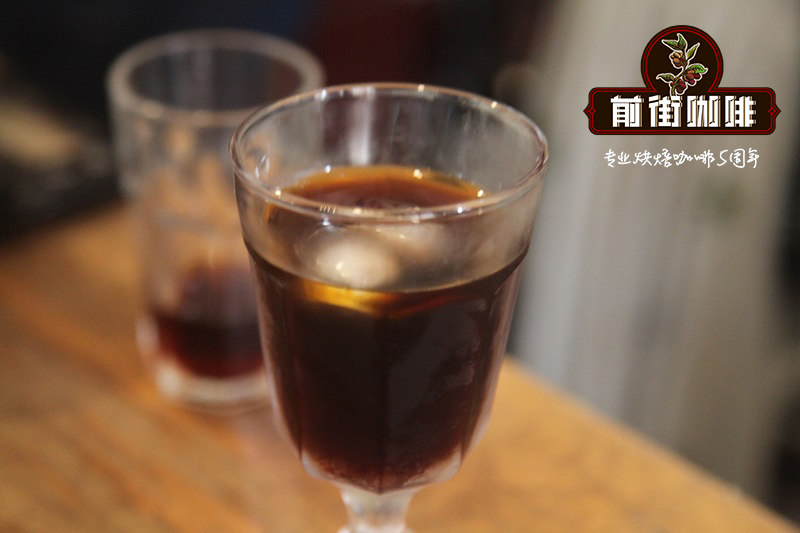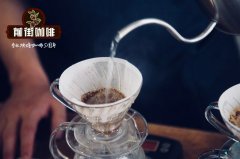Guatemala coffee beans recommend good and inexpensive Guatemala Latisa Manor Coffee at affordable prices

Professional coffee knowledge exchange more coffee bean information please follow the coffee workshop (Wechat official account cafe_style)
Guatemala Finca Las Deliclas
Guatemala Coffee Bean Latisha Manor
| 01 | Overview of coffee bean producing areas in Guatemala |
The Republic of Guatemala (Spanish: Rep ú blica de Guatemala), translated as Guatemala, is a country of Central America, located in the south of the North American continent. It borders the Pacific Ocean to the west, the Caribbean Sea to the east, Mexico to the north, Belize to the northeast, and Honduras and El Salvador to the southeast. Guatemala produces about 3.5 million bags of coffee each year, while Guatemalan coffee beans account for 40 per cent of the country's total agricultural exports. This country, which mainly grows and exports coffee, has fertile soil suitable for coffee trees, suitable climate, abundant water resources and high altitude planting height.
Coffee was really introduced into Guatemala in 1750 by Father Jesuit, where the coffee industry was developed by German colonists at the end of the 19th century. Today, most of Guatemala's coffee beans are produced in the south of the country. Guatemala has eight main coffee producing areas: Antigua (Antigua), Cobain (Coban), Lake Attilan (Atitlan), Vevetnango (Huehuetenango), Farahan Plateau (Fraijanes), Oriente (Oriente), and San Marco (San Mareos). Vivette Nango and Antigua are best known to coffee lovers.
Located in the tropics, there are many volcanoes in the territory, the northern and eastern coastal plains have a tropical rain forest climate, and the southern mountains have a subtropical climate. The year is divided into two dry and wet seasons, with the wet season from May to October and the dry season from November to April of the following year. The annual precipitation is 2000-3000 mm in the northeast and 500-1000 mm in the south. The forest accounts for half of the country's area and is the location of the best latitude for coffee production. Because coffee is an important economic crop locally, it has given rise to a rich Guatemalan coffee culture. People drink coffee every day. Most people have a cup of coffee for lunch.
Guatemalan Coffee beans-Latisha Manor
Las Deliclas
The Fraijanes producing area is surrounded by the capital, Guatemala City, with high altitude, abundant rainfall and great humidity variation. Ash from Pacaya, Guatemala's most active volcano, provides important minerals for the soil in the region, but occasionally affects human safety and infrastructure.
Unique geographical conditions of the Farahan Plateau-volcanic soil, high altitude, humid and rainy climate, active volcanic activity. The Pacaya volcano in the region is the most active of the three still erupting volcanoes in Guatemala, leaving the Farahan Plateau often shrouded in a thin layer of dust and providing plenty of minerals for the soil of the Farahan Plateau. The dry period of coffee beans is the sunny season on the Farahan Plateau. Although it is often cloudy and foggy in the early morning, it will dissipate quickly, ensuring sun conditions in the area.
Coffee cultivation at La Tisha Manor on the Farahan Plateau began in 1920. The estate is planted with bourbon species, Kaddura, Pacamara, etc., with a variety of varieties. Of the 205acres (4046.8 square meters per acre) of the farm, 173acres are used to grow coffee. Another 32 acres of native forest is home to a variety of local wild species. There are several natural springs on the farm that provide adequate and high-quality irrigation for coffee plantations during the dry season, and they are also the power source for coffee processing plants (water for water treatment).
02 | handling method of Guatemalan coffee beans
In view of the shortcomings of the traditional solarization method, it is followed by the washing method. Use a peeling machine to separate most of the pulp from the coffee beans, then guide the shelled beans to a clean sink, soak them in water and ferment to completely remove the residual pulp layer. In the past (about five years ago), washing was often the first choice for good Guatemalan coffee beans.
Through water treatment, unripe beans and defective beans are selected because of buoyancy, and the fermentation process is easier to control, so the flavor is not mixed like sun beans, but shows obvious acidity, complexity and cleaner (without any negative flavor, such as astringency or sharpness). But it is also because it is too "clean" and the richness of the flavor is a little weaker.
03 | Analysis of Guatemalan coffee beans
Like Costa Rica, El Salvador, Mexico, Honduras and other Central American countries, Guatemala coffee beans are graded on the basis of altitude. Coffee produced at high altitudes is generally of higher quality than at lower altitudes, because the higher the altitude, the lower the temperature. At high elevations, the slower the coffee grows, the more beneficial it will be to the accumulation of good substances.
With less silver skin attached to the surface of raw beans, coupled with almost no obvious defective beans, the grade of raw beans is classified in the preferred level. Raw beans will have the smell of grass and spice, with a unique smoky smell, the aroma is very strong.
That's why there is a way to classify quality by altitude. So what is the grading method based on altitude? Let's take Guatemalan coffee beans as an example. The higher the altitude, the higher the density of coffee beans and the higher the grade of raw coffee beans:
The highest grade of Guatemalan coffee beans is SHB very hard beans, which are grown above 1350m above sea level.
The second is HB hard bean, which is planted at 1200m~1400m altitude.
There are also SH slightly hard beans, which are planted at an altitude of 1200m.
Guatemala coffee beans raw bean information
Country: Guatemala
Grade: SHB
Production area: Fraijanes,Guatemala City
Altitude: 1675 m
Harvest time: October to February of the following year
Treatment: washing
Variety: bourbon, Kaddura
Processing plant: Ladisha Manor
Flavor: black tea, flower scent, rich caramel feeling
04 | roasting analysis of Guatemalan coffee beans
Latisha is a combination of two varieties of raw beans with different densities, so when raw beans with different densities are mixed, the release temperature is set on the basis of bourbon seeds, and when steaming, please use Kaddura seeds as the standard, that is to say, newly produced seasonal beans plus high density (more than two kinds of raw beans are mixed for baking. Take the raw beans with the highest density as the basis for steaming (it will be preheated by low heat in the first minute).
Yangjia 800N, raw bean 550g, specific operation:
The furnace temperature is 200 degrees Celsius into the pot, the throttle is set to stew for 1 minute, then adjust the firepower to 160C, the throttle remains unchanged, the furnace temperature is adjusted to 165C, bake to 540 ", the temperature is 153.9 degrees, the bean surface turns yellow, the smell of grass disappears completely, the dehydration is completed, and the throttle tune is 4.
In the 9th minute, ugly wrinkles and black markings appear on the bean surface, and the smell of toast obviously changes to the smell of coffee, which can be defined as a prelude to an explosion. at this time, listen clearly to the sound of an explosion point, to 9: 22 "start an explosion, adjust the firepower to 80 degrees, the throttle is fully open 5 degrees (the firepower should be very careful, not so small as to be free of cracking sound) 60 degrees, 197.2 degrees when the pot.
The taste of cup test
Features: balanced taste, mellow thickness, chocolate flavor
04 | Analysis of cooking of Guatemalan coffee beans
Parameter reference of hand-made Guatemalan coffee beans
Use V60 filter cup, 16 grams powder 32 grams of water steaming for 30 seconds, 89-90 degrees water temperature extraction, 1:14, medium and fine grinding small Fuji 4, the second water injection to 140ml cut off, wait for water drop and then slowly water injection, uniform speed, the water level should not be too high, again water injection to 220ml stop, extraction time 2:15 seconds ~ unique smoky taste and chocolate taste, we can fine-tune according to their own taste.
Guatemala coffee bean brand recommendation
The Guatemalan beans roasted by Qianjie Coffee are fully guaranteed in terms of brand and quality. And more importantly, the performance-to-price ratio is extremely high, a pack of 227 grams, the price is only 118 yuan. According to the calculation of 15 grams of powder per cup of coffee, a bag of coffee can make 15 cups of coffee, which costs only about 8 yuan per cup, which is recommended by conscience compared to the price sold in cafes for dozens of yuan a cup.

Important Notice :
前街咖啡 FrontStreet Coffee has moved to new addredd:
FrontStreet Coffee Address: 315,Donghua East Road,GuangZhou
Tel:020 38364473
- Prev

Information on four major coffee producing areas and estates in Guatemala recommendation of Guatemalan coffee beans
Professional coffee knowledge exchange more coffee bean information please follow the coffee workshop (Wechat official account cafe_style) Guatemala Guatemala this country has a lot of volcanoes, the Guatemalan coffee beans produced under the volcanic soil are taste-rich boutique coffee, the average altitude in Guatemala is very high, high altitude means that the environment in which coffee trees grow will have a large temperature difference between day and night.
- Next

Guatemala Antigua flower god coffee how much is a cup of Guatemala's most famous coffee beans recommended
Professional coffee knowledge exchange more coffee bean information please follow the coffee workshop (Wechat official account cafe_style) Guatemala Antigua Guatemala coffee bean Antigua (Guatemala La Minita La Folie) production area: Antigua (Antigua) Fire Mountain Manor: la Minita (La Minita) exit: la Minita (La Minita) collection
Related
- Does Rose Summer choose Blue, Green or Red? Detailed explanation of Rose Summer Coffee plots and Classification in Panamanian Jade Manor
- What is the difference between the origin, producing area, processing plant, cooperative and manor of coffee beans?
- How fine does the espresso powder fit? how to grind the espresso?
- Sca coffee roasting degree color card coffee roasting degree 8 roasting color values what do you mean?
- The practice of lattes: how to make lattes at home
- Introduction to Indonesian Fine Coffee beans-- Java Coffee producing area of Indonesian Arabica Coffee
- How much will the flavor of light and medium roasted rose summer be expressed? What baking level is rose summer suitable for?
- Introduction to the characteristics of washing, sun-drying or wet-planing coffee commonly used in Mantenin, Indonesia
- Price characteristics of Arabica Coffee Bean Starbucks introduction to Manning Coffee Bean Taste producing area Variety Manor
- What is the authentic Yega flavor? What are the flavor characteristics of the really excellent Yejasuffi coffee beans?

